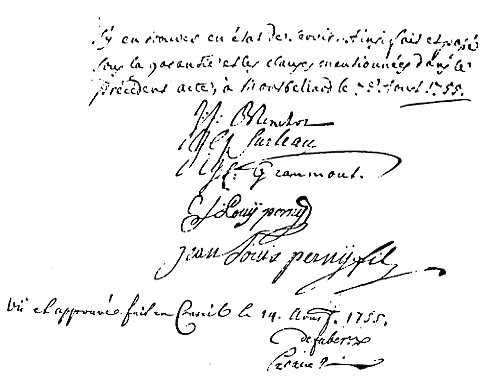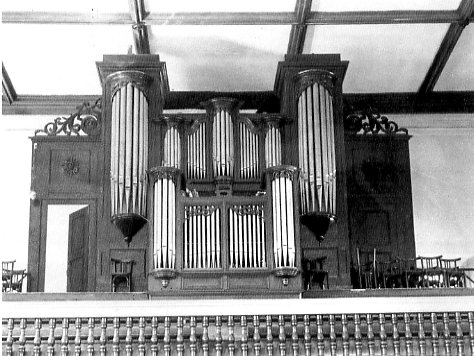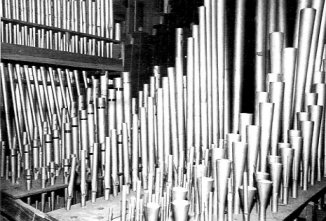Les amis de l'Orgue de Saint-Martin
Montbéliard
| Accueil Le temple Saint-Martin L'orgue Les manifestations L'association Information légales |
1755-1982 : History of an organ The works that the Pernys (father and son, both of them Jean-Louis) have left are not well-known. The Pernys, carpenters and organ builders, established in Hunninge in the 18th cnetury, built two instruments of which no trace remains in the Baden country. They built a third one in Hunninge, but they were never paid for it and they recovered its components. In 1749 they were requested to perfect and deliver to the St Maimboeuf church the ten stop-knobs organ they presently have in the Hunninge church. The deal was struck and the Hunninge organ was moved to St Maimboeuf. Let it be reminded that at that time there were three Lutheran parishes in Montbéliard – St Maimboeuf at the Castle ( a German Paris) and St Georges in the suburbs. The three parishes remained until the early 19th century but from 1815 St Maimboeuf left the Castle church and functioned in the St Martin church premises with the accounts of the two parishes distinct. The St Maimboeuf organ was then transferred to St Georges. The St Georges organ was replaced by a new one in 1861. It was damaged in 1944; its elements later disappeared. The Pernys' work must have been appreciated in Montbéliard since in 1755 they were requested again to provide St Martin with a new organ. Fac-similé
des signatures du marché de 1755
 The instrument, which Alain Sals describes furhter on, was repaired by J.L Perny Jr. In 1777 and 1784. In 1843 ST Maimboeuf and St Martin's church council - «owing to the lamentable condition of their church organ … too bad to bear any sort of repair, which doesn't even keep in tune and thus utterly defeats its object, which is the solemnity of the cult ...» - unanimously decide that the St martin and St Maimboeuf parishes «will acquire a new organ, according to the draughts and estimates produced by Messrs Callinet.» The transformations were very important – Alain Sals sums them up in his report. Joseph Callinet (who has just parted from his brother) kept some of Perny's pipes (great organ bourdon-stop, flute pedal bourdon-stop) and a part of the chest, which is still a part of the present organ. As soon as 1900 the priestly council worries again about the condition of the organ - «Minister Vienot tells the council that the planned repairs to the St Martin organ are now of utmost urgency.» There is obviously no unanimity among the council members as for the choice of the organ builder. Minister Vienot orally authorizes Bedeville, an organ builder from Montbéliard to start the works, basing on an estimate presented by Didier from Epinal, but he then withdraws his authorization because of the reticences of the council, who asks for a new estimate. Once the works completed, the council asks Minister Coulon to have an evaluation carried out. The organist of Bern Cathedral, chosen for the evaluation, is quite laudatory – he describes the restoration as beyond reproach and he thus ends his evaluation report: «May this instrument be preserved from any damage, and may its voice rise for yet a very long time for the glory of God and the joy of men.»  On May 12th 1966 the parish council considering that the restoration has been necessary for a long time, asks the Schwenkedel firm from Strasbourg for an estimate. It is decided that the works will be made in sucessive periods, depending on the financial means of the parish. On May 18th 1968, Minister Mahler tells the council that the works have been completed and suggests a concert to celebrate the restoration of the instrument. The council decides that a special mass will be celebrated on September 22nd. In October 1977 the organ is classified an historic monument thanks to Charles Tripp, a corresponding member of the Ministère des Affaires Culturelles for the north of Franche-Comté, in relation with Michel Chapuis, professor at the Conservatoire National Supérieur de Musique de Paris, organist, rapporteur at the Commission Supérieure des Monuments Historiques 5ème section, and Claude Aubry, expert consultant. This classification protects the organ from a possible restoration. In October 1980, on Minister Marti's initiative, the council once again noting the urgency for repairs to be made to the instrument, which finds itself «in a worrying condition», reckons it cannot take care of the supervising and financing of the restoration work and asks three of its members to promote the creation of an Association which will take care of the restoration of the instrument. To that end, the council votes a delegation of powers by which it approves the creation of the «Association des Amis de l'Orgue de St Martin». Upon Mr Michel Chapuis' proposal three projects are considered:
Mr Chapuis particularly insists on the essential importance of respecting the religious and traditional environment of the instrument. After several preparatory meetings to estimate the success of the potential of the considered operation, a constitutive general meeting is held on February 27th 1982. The Association des Amis de l'Orgue de St Martin is born … an adventure starts, which will last 7 years. Pierre Auger .
 |
